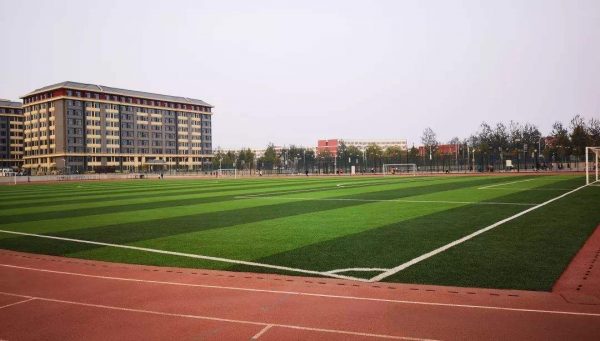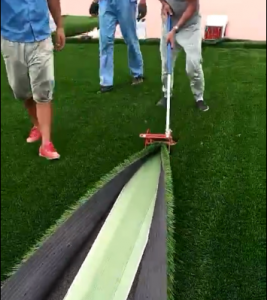What do I need to be aware of when laying artificial turf?
Many people think that if the grass is good, it will make a perfect artificial turf playground. In fact, this idea is not entirely correct. Good turf is the first and foremost requirement for a good playground, but if it is not laid well or professionally enough, even the best turf will not guarantee a quality field. Today we’ll talk more about a few factors that affect the laying of artificial turf.
1. Turf customisation: Many people only know the area when it comes to artificial turf paving, so they only quote the area when customising, which can lead to waste. The width of artificial turf is generally based on 2m and 4m. Customers should customise their artificial turf to suit their site, not all sites are the same width of turf. For example, 11-a-side football pitches are mainly 4m wide turf and 5-a-side football pitches are mainly 2m wide turf. If a 4m wide artificial turf is custom made when a 5-a-side football pitch needs to be laid, it will result in unnecessary waste and will also affect the construction schedule.
2. Paving environment: The weather environment has an impact on the paving of artificial turf. When the weather is rainy, it is not recommended to lay artificial turf. The reason for this is that the glue we apply to the artificial turf joints is water soluble and if it rains, it will affect the effectiveness of the glue. If you fill with quartz sand, it will make the quartz sand wet in the rain and the filling will be uneven, affecting the overall use effect.
3. Construction foundation: Artificial turf paving has certain requirements for ground foundation. Not all sites are suitable for laying artificial turf. Commonly used ground foundations nowadays are cement, asphalt and gravel. Of course, some people also lay them on hard clay surfaces. However, in this case, rain can affect the use of artificial turf, so we recommend using an asphalt or concrete base, which keeps the ground level and has better drainage.
Artificial turf paving: Artificial turf paving should be methodical and professional, it is generally not recommended to pave it yourself, you can find a professional artificial turf paving builder. The lawn is generally placed in accordance with the design plan markings and ink lines, and then spread out from the middle to the sides. There should be no obvious cracks at the junction of the two pieces of artificial turf, otherwise it will affect the splicing of the turf.
Completion inspection: Generally after the construction is completed, the site should be inspected and cleared of rubbish, and any problems found should be repaired in time, otherwise, it will affect the site acceptance and delay the construction progress.



